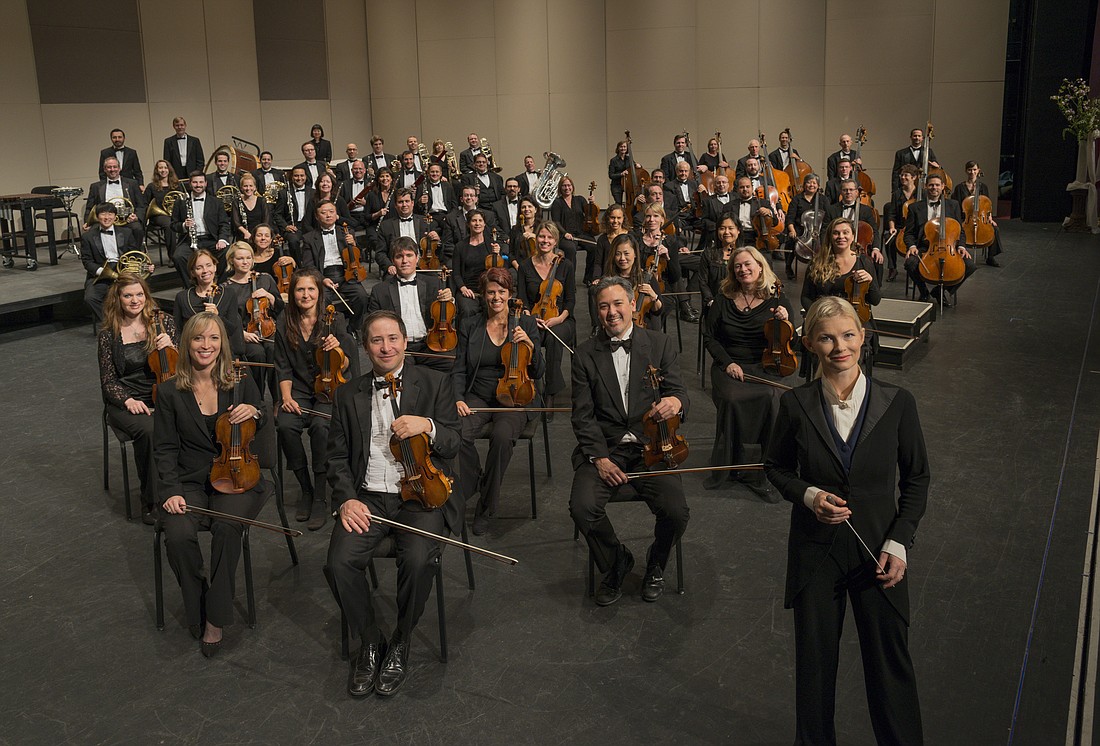- November 23, 2024
-
-
Loading

Loading

This past week’s offering of the Sarasota Orchestra promised more than it delivered — at least as heard in Friday night’s concert at Van Wezel Performing Arts Hall.
The concert’s theme was “Lift-Off,” which was also the title of the first selection, a quick and busy piece by Roger Zare. It was commissioned by Andrew Lane and the Sarasota Orchestra Symphony Association in 2006 when the composer was only 21. “Lift-Off” is a short piece, but it says a lot in its three minutes. Written to depict NASA’s Challenger returning to space in 2005, it is heavy with brass chords and running passages in the strings and winds, quite reminiscent of Holst’s “The Planets,” this concert’s final work. Busy throughout, “Lift-Off” could be a combination of Holst and John Williams, as interpreted by Zare, and it was played with a great deal of flair and enthusiasm.
Soprano Pureum Jo made a big impression in her earlier performance of the Mozart “Requiem” a year or so ago, and Anu Tali invited her back as soloist for this series of concerts. Jo has a clear and lovely sound that can be luscious on occasion, and she navigates the coloratura passages effectively if a bit carefully. Her lyric voice is ideal for Mozart roles as she seems to have an affinity for his style. Unfortunately, her three concert arias (extended pieces not excerpted from an opera) were too similar in style and mood to display the full scope of her voice and talents. A contrasting number would have been welcome.
Tali also chose to keep a mostly full string section for the Mozart, rather than reducing it as usually done to complement the style of the music. As a result, the strings sounded more opulent and romantic than clean, clear and lean, as classical style seems to dictate.
“Do we, or do we not use visuals or mixed media in symphony concerts?” This is a “hot-button” question that is often fiercely debated. I’m not referring to concerts where a film is shown and the sound track is performed live, but the use of visuals to augment and enhance the orchestral performance. Personally, I can argue either side of the question, for when they are properly used, visuals can enhance the onstage performance for many people.
This is especially true in a work like “The Planets,” which for some listeners, could use a little “lift-off” to their imaginations. When the orchestra played this work several years ago, the pictures of the planets from NASA were projected onto a large screen near the rear of the stage, with the stage lights appropriately darkened to create a theater-like atmosphere for the performance. That didn’t happen this time, with the stage lights still bright and the visuals projected on a small screen above the front of the stage. To me these washed-out images proved much more of a distraction than an enhancement.
To what extent this influenced the orchestra is difficult to say, but while everything was well played and correct, the performance lacked much of the expected momentum and excitement and never really made it into orbit. What was meant to be menacing was mostly loud. What was meant to be sprightly and joyful was sometimes just a bit stodgy and plodding, as if all were under a darkened cloud. Even the women’s voices were a bit off pitch and out of sync.
Don’t get me wrong, now. The orchestra played well, with the various soloists from the string, wind and brass sections shining forth as always. Everything was as it is supposed to be, correct, clear and well played, but it was — and this is the first time I’ve ever used this word for this orchestra — routine. This particular performance just lacked that special something that separates the Sarasota Orchestra from all the others, and I missed it.